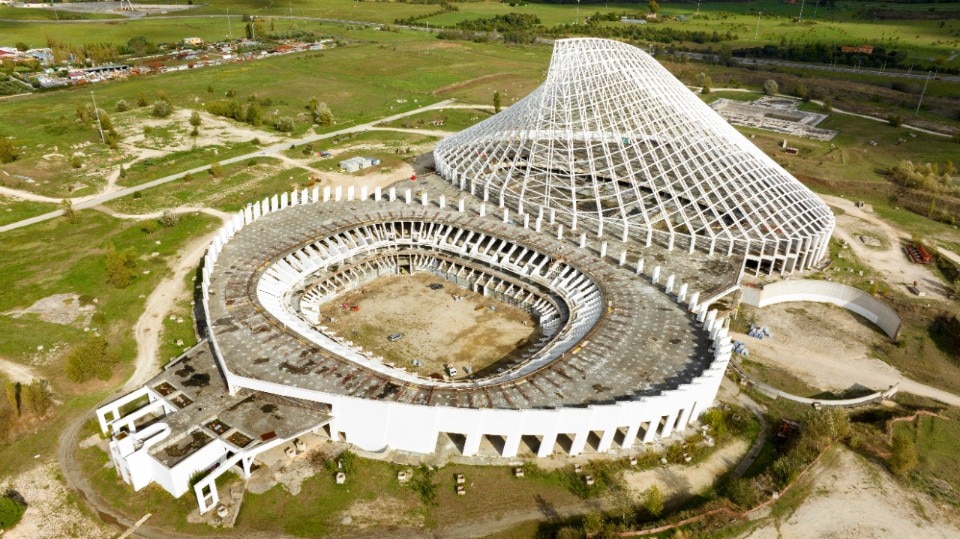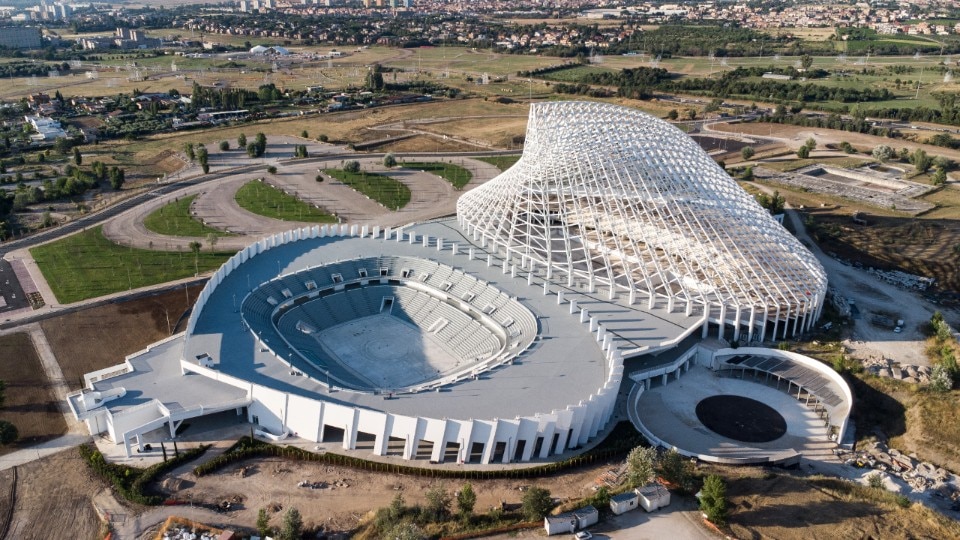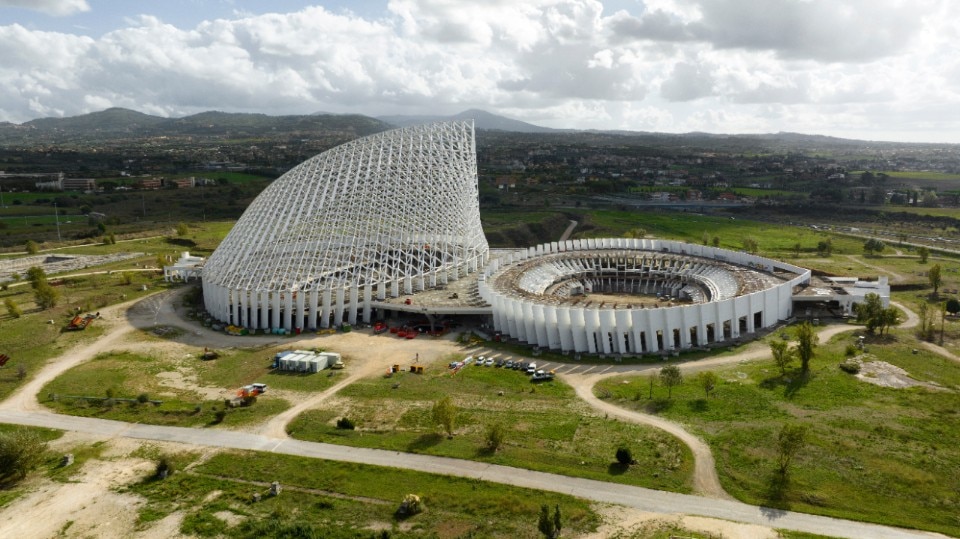As Ernesto Nathan Rogers used to say, the corpses of architecture remain unburied. And this is the case of those numerous works dotting the country, devoured by neglect and abandonment due to procedures (and ambitions) incapable of keeping up with the changing course of gargantuan economic interests, the fickle moods of politics and procedural fetters.
These include, within the Tor Vergata Sports City, Santiago Calatrava's famous Vela: a triumphal and engineeringly disruptive work, in the best tradition of the Spanish archistar who designed it, conceived to inspire a resounding “wow” effect at the 2009 World Swimming Championships in Rome. It is a shame that the work remained unfinished for twenty years, amidst the indignation for broken promises and vanishing resources and the disappointment caused by a sad record: at 75 m high, it was the largest unfinished work in Italy.

The Jubilee 2025, a salvific event also from an urban (as well as spiritual) point of view, lifted the Vela from the river of oblivion. A few days ago, in fact, the Agenzia del Demanio handed back to the Eternal City the building that will host the events of the Youth Jubilee scheduled for the end of July. The original plan, launched in 2005, included two arenas, one for basketball and volleyball and the other for swimming, together with Olympic training pools for outdoor and indoor use. After ups and downs (budget overruns and economic crisis in 2008), the concrete skeleton was the only structure built and the 2009 swimming event was moved elsewhere. In 2021, the University of Rome “Tor Vergata” transferred the legal right of ownership to the Agenzia del Demanio as the contracting agency, with the aim of completing the work as an unmissable intervention among those scheduled for the Jubilee.

The “resurrection” of the work, financed with 80 million euro by the Ministry of the Economy and Finance, the Agenzia del Demanio and the Jubilee Commission, involved a total area of 48 hectares and regarded the consolidation and testing of the existing structures, the completion of the Palasport, transformed into an open-air arena with 8,000 seats and 15,000 standing places, the redevelopment of the external area to the north, the road network, the car parks and the underground services.
Architectural corpses remain unburied but sometimes miraculously arise again.


